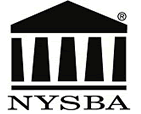In Salazar v.Novalex Contracting Corp., et al., decided on November 21, 2011, The New York Court of Appeals in a 4-3 decision granted defendants’ motion for summary judgment dismissing a construction worker’s 240(1) claim. The plaintiff suffered injury while working in the basement of a building undergoing renovation. The facts of the accident as set forth by Judge Pigott, writing for the majority were in pertinent part, as follows;
“The accident occurred in the largest room of the basement, which had a trench system,for piping. Salazar and the other workmen were laying a concrete floor. They were directed to pour and spread concrete over the entire basement floor, including the trenches. Before he began work on the day he was injured, Salazar looked for, and visuallylocated, the trenches.
The concrete flowed from a truck into wheelbarrows placed in the basement, via a chute fed through a window. Workmen poured the wet concrete from the wheelbarrows onto the floor of the basement, where Salazar and others “pulled” the concrete with rakes, ensuring that the floor would be level. As Salazar explained the next stage of the process at his deposition, the trench system fills with concrete “by itself because the concrete runs and it fills it out . . . the concrete kind of slides down or runs down” into the trenches. Salazar was injured after he stepped into a trench that was partially filled with concrete. He had been walking backwards across the floor, “pulling” concrete with a rake held in front of him, and looking forward, rather than in his direction of motion. As Salazar recalled the incident, “one of the trenches began to fill out with concrete, and at some point when I was pulling, walking backwards, . . . my foot got inside, into that hole.” After Salazar’s right foot hit the bottom of the trench, his right leg folded beneath him. Before being assisted out of the trench by his coworkers, Salazar tried to pull his leg out “on my own, myself, and that’s how I hurt myself.”
 New York Personal Injury Attorneys Blog
New York Personal Injury Attorneys Blog












